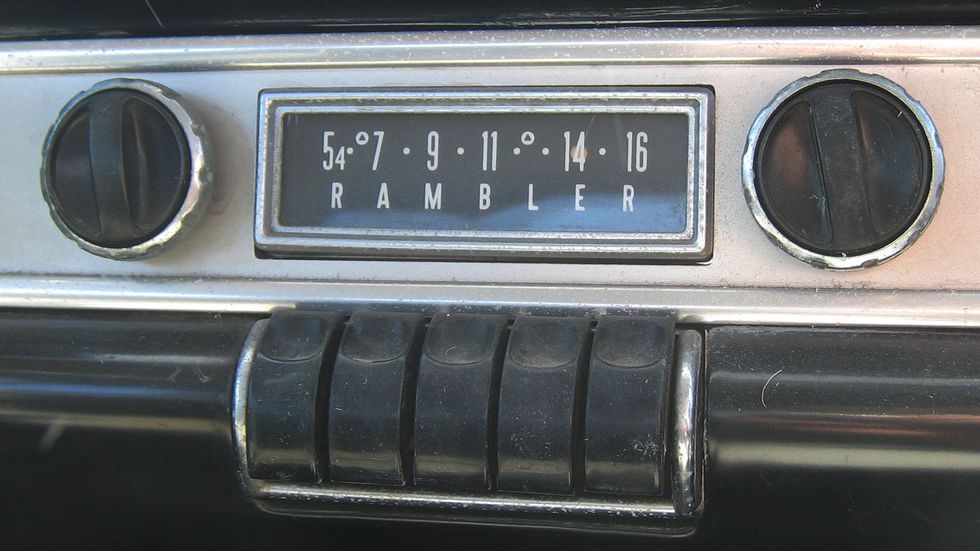A Three-Dollar Fix
October 21, 2021
Author James Lee Burke said, “The allure of Montana is like a commitment to a narcotic; you can never use it up or get enough of it.” I’ve made repeated trips to the big sky state in the past few years and understand what he means. I’m awed by the mountains and plains, fascinated by the wildlife, and obsessed with the trout. But my commitment is to a one-hundred-and-seventy-foot expanse of steel and concrete.

I first visited the state in May of 2016 on a fly-fishing trip with a friend. Since neither of us had ever fished a western river for trout, we hired a guide to help us. He warned us before we arrived that during May it wasn’t unusual to start the morning with summer weather and end the day with winter. Our first day in an area of the Madison River called Three Dollar Bridge skipped summer and went right to winter. It began with temperatures in the forties and a thunderstorm. Then the wind arrived, accompanied by dropping temperatures, sleet, and eventually a snowstorm. The guide said in his decades of working with fishermen; he couldn't remember a more miserable day on the river. It was one of my best. Not the frozen fingers, wind tangled lines, or the cold rain and biting snow. It was the experience of being there in that beautiful valley and catching fish despite the conditions.
Two days later, we returned to the bridge. The weather was clear, the ground covered in snow, and the gods still gracious with the fish. I was so captivated by Montana and the Madison Valley that I vowed to return as often as possible. And I have, twice a year, except for the pandemic year, which limited me to one. My most recent trip was last week. And true to weather form, I waded through the snow to get to the river so I could wade through water. But I was blessed with the view captured in the picture accompanying this post—taken just upriver of Three Dollar Bridge.
Over time I’ve dug into the history of the area. Beginning in the 1950s, local landowners charged fishermen three dollars to park and access the river. They deposited the fee in a large steel lockbox. One of the owners would spend part of his days in the lot, sitting in his pickup with his dog and a gun to make sure no one parked without paying. He never shot anyone, but the guide said local legend has it he would send a round or two over the heads of people who didn't pay.
According to Bridgehunter.com, which catalogs historic and notable bridges across the country, the current bridge was built in 1930. It was originally part of a larger span that crossed the Jefferson River and was relocated to the Madison in 2001. In 2002 the state’s Fish, Wildlife and Parks Department, in partnership with conversation groups, including the Western River Conservancy and Trout Unlimited, purchased the site and entered into water access agreements with private owners in the area. The groups have continued to protect this stretch of the river and provide access.
Fish, Wildlife and Parks still collect a three-dollar access fee. Although now it's voluntary, and no one stands guard with a dog or gun. The deeply rusted steel safe still rests there. An equally rusted filing cabinet drawer sits next to it, and inside are envelopes to use for the donations, as well as ink pens to note the date and your name if you're so inclined.
On each of my trips, I return to the Three Dollar Bridge. Sometimes I fish, sometimes I don't. Like the trip where signs warned of a cow carcass along the river attractive to grizzly bears seeking calories to fatten themselves for the approaching winter hibernation. I practice catch and release when fishing, and since I'm pretty sure grizzlies don't when they hunt, I decided not to wet a line there. When I cast into the waters near the bridge, sometimes I catch fish, sometimes I don’t. But I never miss a visit. As James Lee Burke said, it’s the commitment to the narcotic.
The narcotic of the view of the mountains and plains, and catching sight of deer, elk, moose, pronghorn antelope, and bighorn sheep. It's the feeling of standing on the same land the Shoshone, Flathead, and Bannock Indians fished and hunted and where mountain men like John "Liver-Eating" Johnson made camp. It’s the memory of that first adventure, and the promise of a fat rainbow or brown trout, and the tight tug of the line and the bent rod when you have one on.
Burke further described Montana as wilderness areas that “probably resemble the earth on the first day of creation.” I can’t imagine what the earth may have looked like on its first day, but every time I slide an envelope into the rusted safe, I imagine a cantankerous local owner from decades ago staring at me, rifle laid across his lap. But he doesn't have to worry; three dollars is a small price to pay for a fix that stays with me until I can return.
Like what you read?
Subscribe to my mailing list and get notifications to your inbox when my next blog post goes live.
Contact Us
More By Joe


